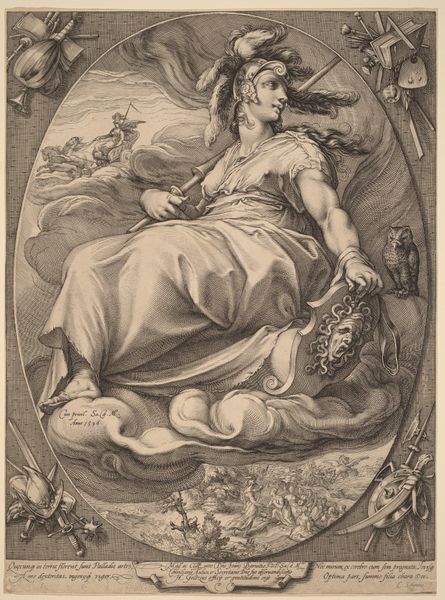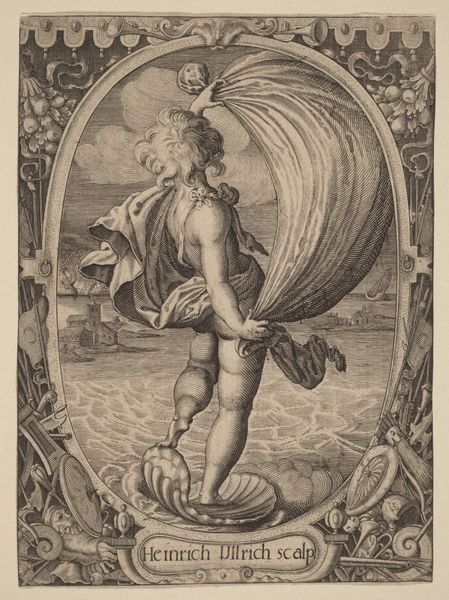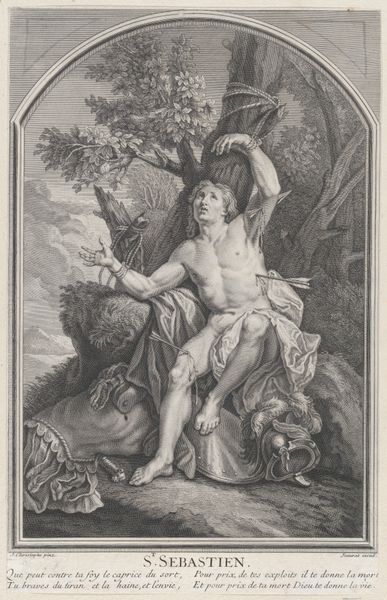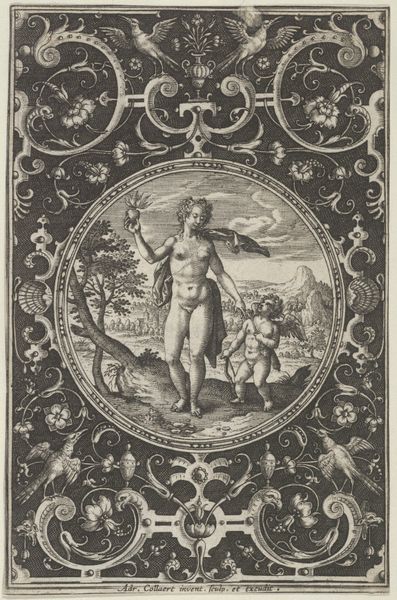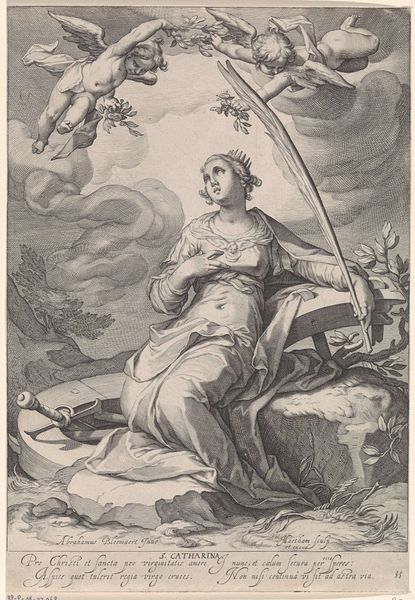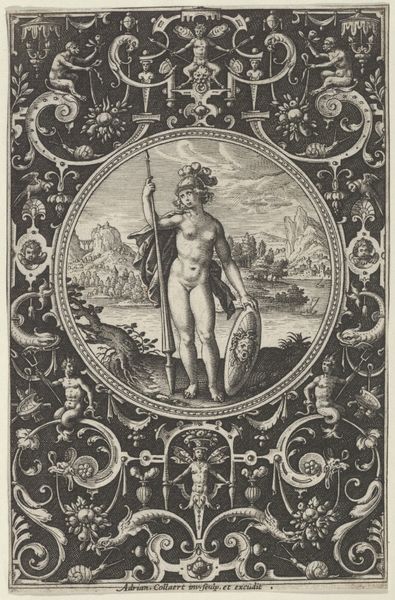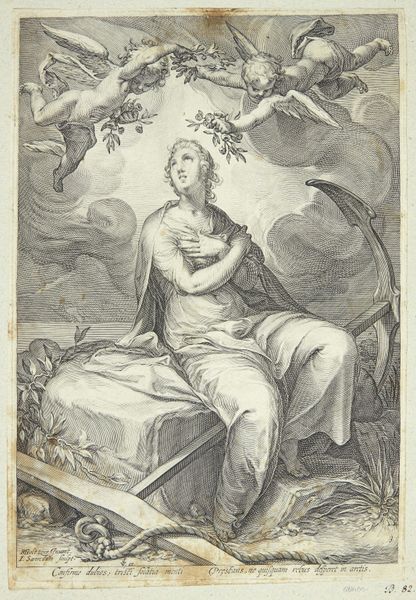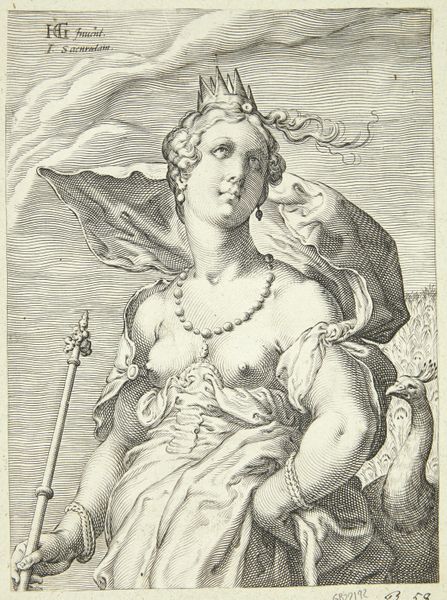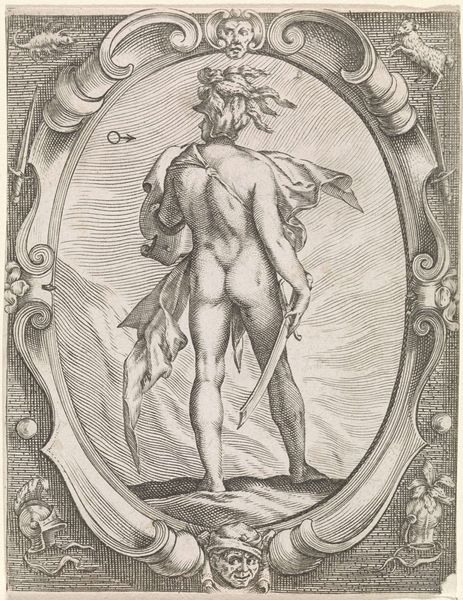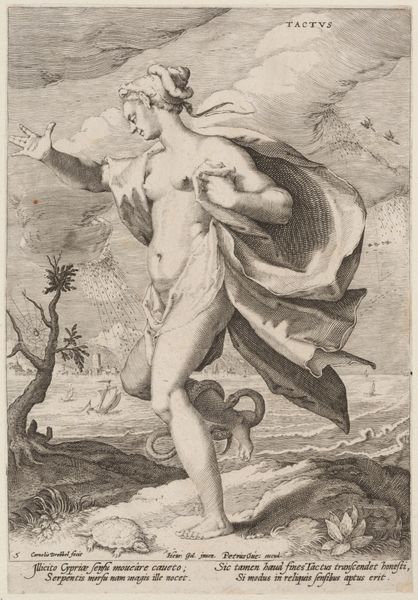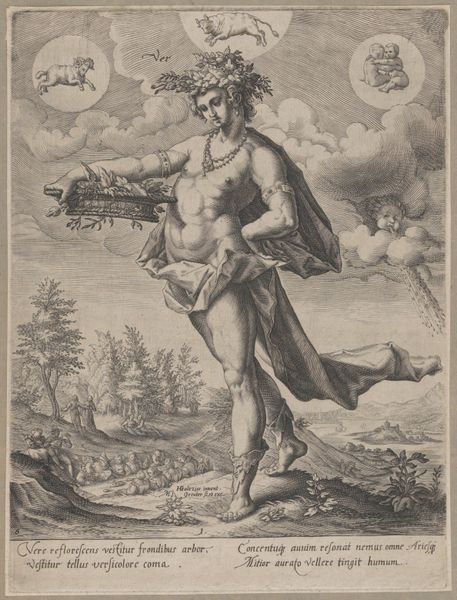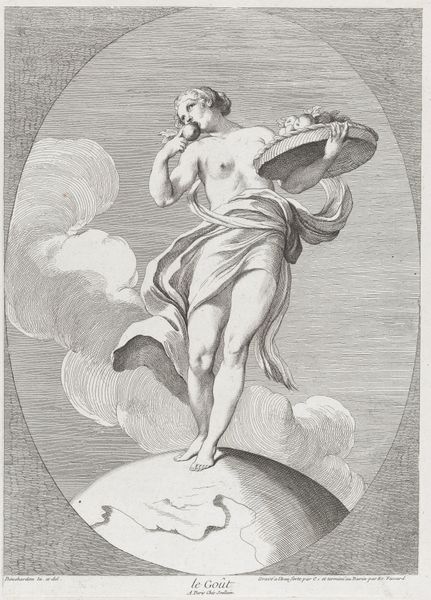
print, engraving
#
portrait
#
allegory
#
baroque
# print
#
caricature
#
mannerism
#
figuration
#
form
#
line
#
history-painting
#
engraving
Dimensions: sheet: 33.8 x 25.3 cm (13 5/16 x 9 15/16 in.) (trimmed within plate mark)
Copyright: National Gallery of Art: CC0 1.0
Editor: This is Hendrick Goltzius’s “Juno,” an engraving from 1596. The detail is incredible! Juno looks almost melancholy despite all the symbols of wealth and power surrounding her. How do you interpret this work? Curator: It’s fascinating how Goltzius blends the traditional iconography of Juno with a certain… vulnerability, isn't it? Let's consider the context. This piece emerges from a Mannerist style, verging into Baroque. How might those styles reflect the sociopolitical anxieties of the late 16th century, when religious and political power struggles were redefining European identity? Editor: I hadn’t thought about it like that. It’s more than just a pretty picture; it’s a commentary. The peacock, the cornucopia, the coins… all symbols of her status, but they feel…burdened somehow? Curator: Exactly. Juno was often invoked to legitimize dynastic rule. But consider, too, the developing mercantile power of the Dutch Republic at the time. Does the work celebrate that wealth, or perhaps critique its excesses and gendered access? How are women positioned in relation to power during this period? Is Goltzius subtly commenting on the limitations placed on even the most ‘powerful’ women through the image of this goddess? Editor: So it’s not just about celebrating Juno’s power, but also about questioning what that power actually means, especially for women. The beads around her fingers, they seem like a prayer but also a chore...like she is doomed to power and chained to all her royal attributes. Curator: Precisely! Think about it in relation to feminist readings of mythology. Juno often embodies the constraints of marriage and societal expectations imposed upon women. What new understanding can you see now? Editor: I see how the art historical context, combined with the developing perspectives of feminist theory, can bring such depth and nuance. Thank you for pointing out this image of Juno is not only aesthetically pleasing, but it holds complex dialogues of those intersectional social values regarding identity, power and politics. Curator: Exactly! Now consider how those themes still resonate today…
Comments
No comments
Be the first to comment and join the conversation on the ultimate creative platform.
